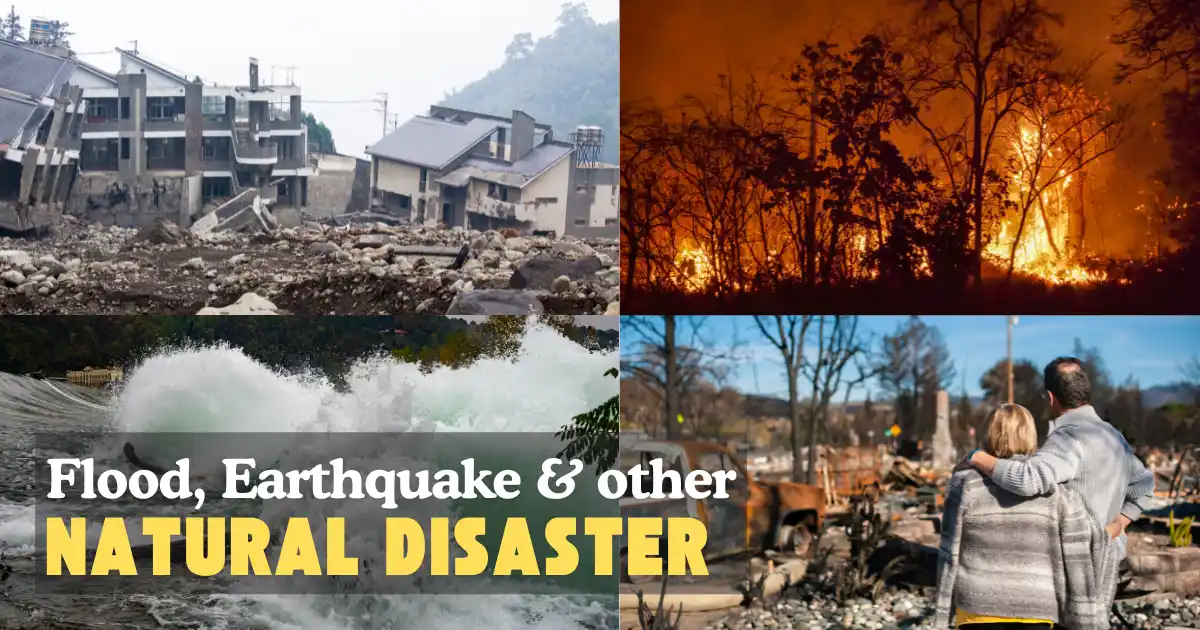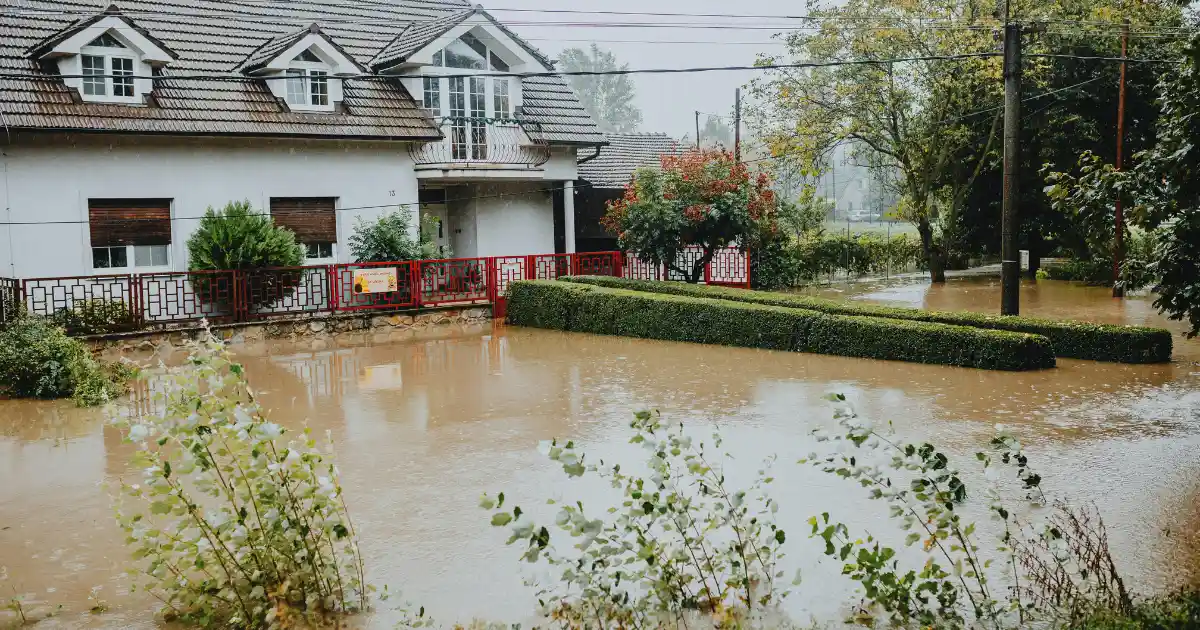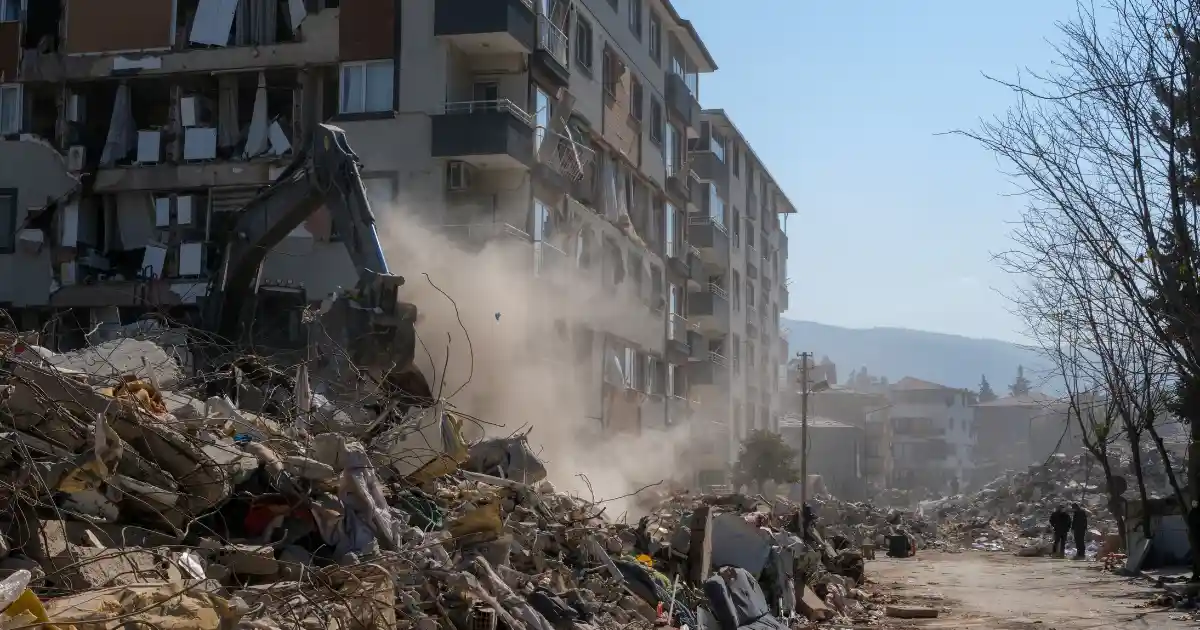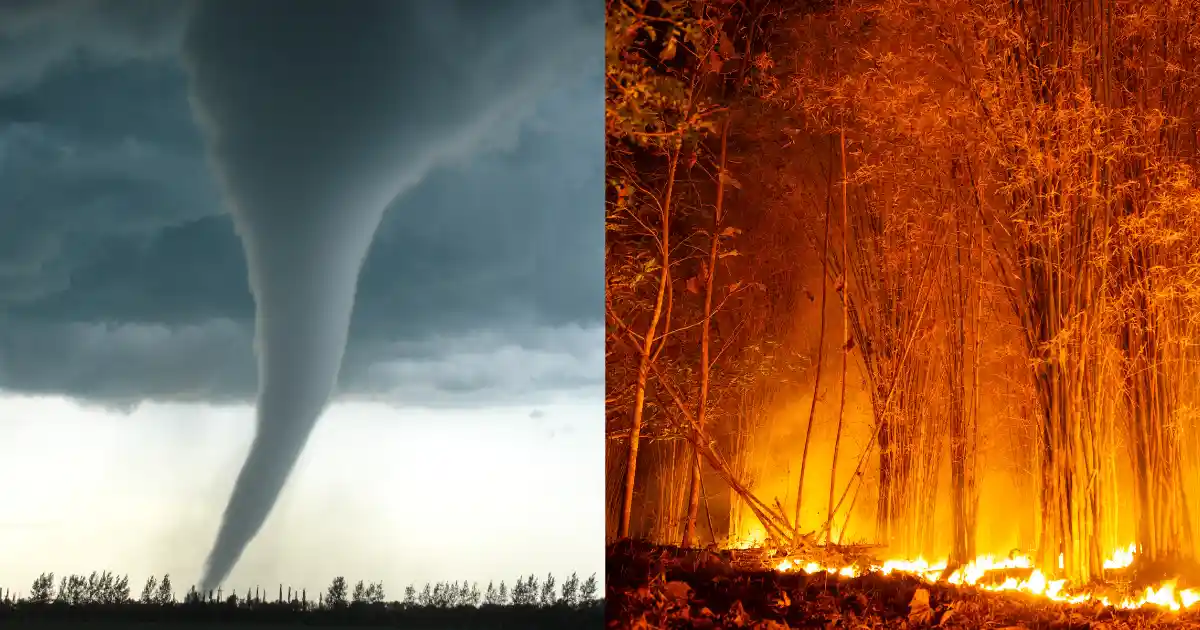Natural disasters can strike at any time, causing catastrophic destruction to properties and homes. While home insurance is a crucial protection, it often isn’t sufficient in the event of floods, earthquakes, and other significant events. Understanding the coverage of the policy you have purchased and what’s not essential to protect your home and your money.

In this complete guide we’ll review the most important aspects of protection against natural disasters We’ll show you how you can obtain extra protection. We’ll also help you in making informed decisions to protect yourself.
What Are Natural Disaster Coverages?
Natural disaster coverage is coverages or insurance plans that safeguard your property and home from the damage that can be caused by natural disasters such as earthquakes, floods, wildfires, hurricanes and much more. These insurance policies are usually distinct from the standard homeowners insurance, and could require additional riders or policies.
Standard Home Insurance: What’s Covered and What’s Not
What’s Typically Covered:
- Damage from smoke and fire
- Hail and windstorms (except in certain high-risk zones)
- Lightning strikes
- Vandalism and theft
- Water damage (from burst pipes but not flooding)
What’s Not Covered:
- Floods (rising water coming from the outside)
- Earthquakes and ground movements
- Landslides and Mudslides
- Backup sewer (unless you choose to add an additional rider)
- Lack of maintenance or neglect
Key Point:
The majority of natural catastrophes need separate policies of insurance or endorsements to ensure total protection.
Flood Insurance

1. What Flood Insurance Covers
- The structural damage that your home suffers (foundation walls, walls plumbing)
- In-built appliances as well as major systems (furnace water heater, furnace)
- Personal items (furniture clothes, electronics, etc.)
- Removal of debris
2. What Flood Insurance Does Not Cover
- Damages from sewer backup (unless you add)
- Landscaping, decks, patios, fences
- Costs for temporary housing (unless you choose to add coverage)
- Cars and other vehicles (covered through auto insurance)
3. How to Get Flood Insurance
- Buy through National Flood Insurance Program (NFIP) or private insurance companies
- Mandatory for homes located in flood-prone zones that have federally-backed mortgages
- 30 day waiting time for the new policy (plan in advance!)
Pro Tip:
Take a look at FEMA map of floods to determine your flood risk and the required coverage.
Earthquake Insurance

1. What Earthquake Insurance Covers
- Home structure damage caused by shaking of the ground
- Structures that are detached (garage shed)
- Personal property (furniture and electronic devices)
- Additional living expenses in the event that your home is not habitable
2. What Earthquake Insurance Does Not Cover
- Water damage or fire after the quake (may be covered under the standard insurance)
- Land worth or landscaping
- Vehicles
- Pre existing damage
3. How to Get Earthquake Insurance
- Purchase as an addition (endorsement) for your homeowner’s insurance policy or as an individual policy
- Available through private insurers and government program (e.g., California Earthquake Authority)
- Deductibles are typically very high (10-20 percent of the coverage amount)
Pro Tip:
Even if you’re not located in California earthquakes are possible in several states. Check your risks!
Other Natural Disaster Coverage

1. Hurricanes and Windstorms
- The damage caused by wind is usually insured, however in high-risk coastal regions, you might require a separate windstorm insurance policy.
- Deductibles for hurricanes generally higher and are based on the proportion of the value of your home.
2. Wildfires
- The majority of policies cover the damage caused by wildfires however, you should be sure to check for exclusions in high-risk zones.
- Certain insurance companies may not offer new policies in areas prone to wildfires.
3. Tornadoes and Hail
- Typically, home insurance is covered under standard insurance.
- Damage to siding and roofs are typical lawsuits.
4. Landslides and Mudslides
- Not covered under standard policies and flood insurance.
- Might require a separate “difference in conditions” (DIC) policy.
Cost of Natural Disaster Insurance by Type
| Disaster Type | Average Annual Premium | Deductible Type |
| Flood | $600-$1,500 | Fixed ($1,000-$10,000) |
| Earthquake | $800-$2,500 | The percentage of coverage (10-20 10-20%)) |
| Windstorm | $300-$1,000 | Coverage % |
| Wildfire | Included/Varies | Standard or % |
| DIC (Landslide) | $1,000+ | Varies |
Costs are influenced by the location as well as home value, as well as the risk variables.
Cost of Natural Disaster Insurance by Home Size/Location
| Home Size/Location | Flood Insurance | Earthquake Insurance | Windstorm Insurance |
| “The small home” (1,200 square feet) | $400-$900 | $600-$1,200 | $250-$600 |
| Medium Home (2,000 sq ft) | $700-$1,500 | $1,000-$2,000 | $400-$900 |
| Large Home (3,500+ sq ft) | $1,200-$2,500 | $1,800-$3,500 | $700-$1,500 |
| High-Risk Zone | $2,000+ | $3,000+ | $1,500+ |
Factors Influencing Coverage and Cost
- Place: Proximity to water fault lines, water or high-wind zones
- home construction: Materials, age and elevation
- Maximum Coverage: More limits translate to higher prices
- Taxdeductibles The higher the deductible, lower rates, but can increase out-of pocket expenses
- Claims The history: Previous claims can increase rates
- Protection Measures: Flood vents, sump pumps, seismic retrofitting materials resistant to fire
How to Get Extra Protection
- Enhance Endorsements Talk to your agent about earthquake, flood, and windstorm insurance.
- Shop around: Compare policy options from different providers.
- Reduce Risks: Upgrade your home to decrease risk and be eligible for discounts.
- Review annually: Update your coverage when your risk profile, home or residence alters.
- Learn Waiting Periods A lot of disaster policies require 30-day waiting times.
Conclusion
Natural disasters can be unpredictable However, your insurance coverage isn’t required to be. If you know what’s covered in your insurance policy, what needs additional protection, and how you can obtain the appropriate protection for your home, you can protect your home and your finances from the unforeseeable.
Don’t put off reviewing your policy, make inquiries and ensure that you’re secured. A good insurance policy can bring assurance, regardless of the challenges by signing up with us.
FAQs
Will the standard insurance for homes cover floods or earthquakes?
No, you need separate policies for earthquake and flood coverage.
How can I tell if I need earthquake or flood insurance?
Check FEMA flood maps and local seismic risk maps, or consult your insurance representative.
Do I qualify for catastrophe insurance if I reside in a high-risk zone?
Yes, but it may be more costly or require additional policies.
What is the waiting time to get flood insurance?
Usually, it is 30 to 60 days after the day of purchase.
Is living expenses covered in the event of a natural disaster?
Standard insurance policies may cover insured hazards, but not earthquakes or floods unless you add extra coverage.
How do I cut my disaster insurance cost?
Reduce risk (elevate your property, install sump pumps, retrofit for earthquakes), increase your deductible, and compare policies.
What do I need to do in the aftermath of a disaster?
Call your insurer immediately, document all damages, and follow their claims procedure.
